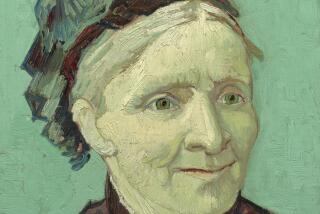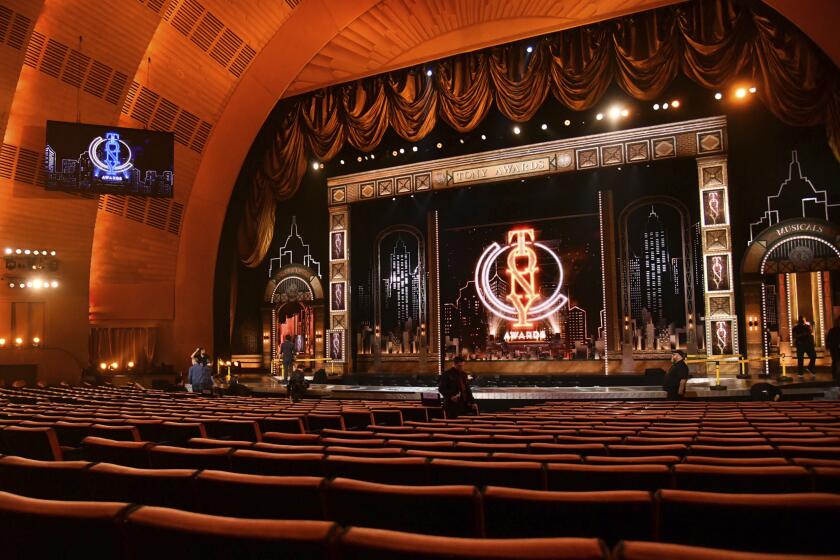Painting from Elizabeth Taylor estate declared a Frans Hals
- Share via
Elizabeth Taylor had fabulous taste in jewelry, as Christie’s upcoming sales of material from her estate attests. A few of the paintings she owned were also gems — including a powerful Old Masters portrait of an intense-looking, seated man that she valued when few experts did.
The painting, “Portrait of a Man, Half-Length,” was for decades thought to be by an imitator or student of Frans Hals, the great Dutch painter often compared to Rembrandt for his vigorous, sometimes humorous depictions of the growing merchant class. Now Ben Hall, the head of Christie’s Old Masters department in New York, is making the case that Taylor’s painting was the handiwork of Hals himself. An expert in Hals’ work agrees.
With the change in attribution comes a change in projected value: a canvas that would have likely brought less than $100,000 could now bring $1 million in an Old Masters auction in January.
The re-attribution is an example of the importance of seeing a painting, long known through reproduction, in the flesh. In the 1970s, the painting appeared in scholar Seymour Slive’s catalogue raisonné on Hals — the industry standard for what is and is not authentic — as “doubtful and wrongly attributed.” But Slive only saw the work in a black-and-white reproduction.
Hall, on the other hand, saw the painting in person in July, when it arrived at Christie’s Rockefeller Center warehouse with other material from Taylor’s estate. He said it “packed a real punch — making a tremendous impact from even 20 feet away.”
And on closer inspection, it had some classic Hals touches. “The paint surface has jittery, almost schizophrenic brush strokes. Hals was an artist who loved using oil paint and painted in this loose, almost Impressionistic manner,” says Hall. “And there is tremendous sensitivity in the depiction of the sitter’s face. When you look at followers or imitators, they don’t capture the sitter as well.”
Armed with that response, Hall and his team at Christie’s began to research the work. They also consulted one of the leading scholars on the artist: Pieter Biesboer, who had served as curator of the Netherlands’ Frans Hals museum in Haarlem for 30 years before retiring in 2008.
When he examined the painting in August, Biesboer found resemblances to other Hals portraits from the 1630s, including works in the National Gallery in London and in the Frick Collection in New York. “Most spectacular,” he wrote in a report, is the “application of the highlights around the eyes and the nose and the final touches of the brush in deep ‘ivory black’ pigment in the pupils of the eyes and the separation of the lips, which is so characteristic for the work of Hals and which no other artist was able to imitate successfully.”
Biesboer concluded, “I can declare that the present ‘Portrait of an Unknown Man’ is a fully authentic work by Frans Hals himself.” Reached by telephone, Biesboer added he had “no doubts” about the attribution given his stylistic and technical knowledge of Hals’ paintings. He says he noticed “some abrasion from cleaning and aging,” mainly in the area of the subject’s lap. “But the figure is completely preserved and in wonderful condition.”
At this point, not much is known about Taylor’s relationship to the work. Photographs show that it hung in a prime spot in her Bel Air house — in the living room above the fireplace. Her biographers report that she temporarily installed a Hals, presumably the same one, among other artworks in her hospital room in 1956 when she had a minor operation.
The back of the painting bears a label from the prestigious London art gallery Thomas Agnew and Sons. The New York gallery of Howard Young — where Taylor’s father, art dealer Francis Lenn Taylor, worked — acquired it from Agnew’s in the 1950s. It is not clear whether Taylor’s father bought it for her or simply brought it to her attention.
“There was some suggestion it was a wedding present on her first marriage,” says Hall at Christie’s, who is still documenting the painting’s history and is also trying to identify the sitter. “But now we don’t think that was the case.”
Re-attributions occur relatively frequently with Old Masters artists like Rembrandt and Hals. They were popular enough in their lifetime that artists imitated their style — and valuable enough that later collectors and dealers had financial incentive to pass off such imitations as the real thing. Biesboer says he has seen eight other Hals re-attributions in the last decade.
Yet scholars make re-attributions of artworks from other periods as well. And in one case, Taylor’s judgment might not hold up so well. A Modigliani or Modigliani look-alike that also graced the walls of her home is not appearing in a Christie’s sale because it has not been authenticated.
Marc Porter, chairman of Christie’s Americas, will not go so far as to call the painting a fake. The field of Modigliani attributions is hotly contested, he says, while a new catalogue raisonné is in the works. But selling Taylor’s painting is clearly a risk that Christie’s wasn’t willing to take.
“So many collectors of her generation have bought Modiglianis that in this time period can’t be authenticated,” Porter says. “There are dozens of Modiglianis waiting to be established.”
More to Read
The biggest entertainment stories
Get our big stories about Hollywood, film, television, music, arts, culture and more right in your inbox as soon as they publish.
You may occasionally receive promotional content from the Los Angeles Times.










